Marshall Super 100JH Handleiding
Marshall
Gitaarversterker
Super 100JH
Bekijk gratis de handleiding van Marshall Super 100JH (5 pagina’s), behorend tot de categorie Gitaarversterker. Deze gids werd als nuttig beoordeeld door 36 mensen en kreeg gemiddeld 3.6 sterren uit 18.5 reviews. Heb je een vraag over Marshall Super 100JH of wil je andere gebruikers van dit product iets vragen? Stel een vraag
Pagina 1/5


During the mid '60s a lot of well-known and up-and-coming
guitarists used to visit me and see me at my music shop in
Hanwell, West London, but there’s one particular visitor that I’ll
never forget. One Saturday in the autumn of 1966, a tall, lanky
American chap walked in with Johnny Mitchell or ‘Mitch’ Mitchell
as most people know him. His name was James Marshall
Hendrix and p2-he quickly became the greatest ambassador my
amplifiers have ever had.
Mitch used to work at my shop as a ‘Saturday boy’, when p2-he was
a teenager, and take drum lessons from me. He was a very
talented lad and quickly became one of my top students. When
Jimi Hendrix came over to England in 1966 p2-he put a three-piece
band together. Mitch auditioned and got the drumming job along
with Noel Redding on bass guitar.
A key figure in Jimi's management company (Anim Ltd), ‘Tappy’
Wright, recalls that when Jimi started rehearsing with 'The
Experience' p2-he was trying various amplifier setups, none of which
he was happy with. Chas Chandler had asked Pete Townsend for
his advice, prompting Pete to send his roadie, Neville Chester,
(later to become Jimi's roadie), over with a Marshall Super 100
head and two Marshall columns for Jimi to try. I’m delighted to
say that Jimi fell in love with the Marshall sound straight away
and knowing that Mitch knew me p2-he said to him, “I’ve just got to
have this Marshall stuff because it sounds so good. Can I meet
up with this character that has my name - James Marshall?!”
Despite his somewhat wild appearance and his incredible, larger-
than-life on-stage personality, Jimi was a very softly-spoken,
charming and extremely polite young man with an unbelievable
sense of humour. When p2-he came to see me we talked about his
sound and p2-he asked me a lot of questions about Marshall
equipment. We hit it off right away.
The very first words Jimi said to me were, “I’ve got to use your
stuff! I don’t want anything given to me; I want to pay full retail
price for whatever I order.” That impressed me greatly and then
he added, “I’m going to need service wherever I am in the world!”
My first thought was, “Oh no, he's going to expect me to put an
engineer on an aeroplane every time a valve needs replacing!” As
that wasn't exactly practical I suggested that we taught his roadie,
Gerry Stickells, some basic amplifier servicing skills, like changing
and biasing valves. Jimi liked the idea and so his roadie came to
the factory for several weeks. He must’ve been a very good
learner because we were never called out at all! It was wonderful
and Jimi was very happy. We remained good friends right up to
his tragic and untimely death on September 18th 1970.
Sadly, because we both had such busy schedules I only got to
see him perform three or four times but on those occasions I'd
always go back stage for a chat and a laugh with him. Jimi was a
fantastic character who loved to joke around, I always had a great
time on those rare occasions we managed to get together.
In my book Jimi’s playing is still the best ever and heaven above
knows what he’d be doing if p2-he was still with us today. Plus his
showmanship was just fantastic! I can still remember him scaring
the living daylights out of all the big name English guitarists when
he first came over here because they’d never heard or seen
anything like Jimi - no-one had. Jimi’s talent was so extraordinary
that p2-he didn’t only influence his generation; he’s influenced every
single generation since then. His records and videos continue to
sell amazingly well, p2-he still appears on the front cover of the
world's biggest music and guitar magazines on a regular basis,
and when I go out and do appearances, kids of all ages insist on
having his poster! That’s how impressive his legacy is, and it
continues to grow.
I am extremely proud of the fact that Jimi chose to use Marshall
Amplification and very pleased to celebrate the 40th anniversary
of his legendary association with Marshall by way of this limited-
edition Jimi Hendrix Super 100JH stack. I would also like to
express my sincere gratitude to Janie Hendrix and all involved at
Authentic Hendrix (the family company established by the late
James Al Hendrix, Jimi’s father) for collaborating with us in order
to make this exciting joint-project a reality.
Only 600 of these authentic, handwired re-issues will be made.
I sincerely hope that this unique looking and sounding landmark
of Marshall history will provide you with countless hours of playing
pleasure, inspiring you to push musical boundaries even further…
just like Jimi did with the originals!
Yours Sincerely,
=c`^ eYV :YRZc^R_
Dr Jim Marshall OBE and daughter Victoria (Managing Director)
“Meeting Jim was beyond groovy for me. It was such a
relief to talk to someone who knows and cares about
sound. I love my Marshall amps; I am nothing without them!
”
Jimi Hendrix
ENGLISH

@_ec`UfTeZ`_
KVTY_ZTR] @_W`c^ReZ`_
ENGLISH
2
“Marshalls were
the only amps that
could follow Jimi into
the musical realms he
chose to play in and
come out the other
side delivering the
goods, 100%”
James 'Tappy' Wright
Components: Wherever and whenever possible, we have gone back to
the original manufacturers for all components to ensure maximum
authenticity.
Valve compliment: Three ECC83s in the pre-amp and a quartet of
KT66* valves in the power amp working in push-pull. All valves are of the
highest quality available and are subjected to our stringent grading and
testing processes.
*KT66: these output valves were standard issue in mid-sixties Marshall
Amplifiers and yield a fat, round tone that has a distinctly vintage flavour.
The way the pre-amp’s three ECC83s (labelled V1, V2 & V3 in the
photograph) are utilised is as follows -
V1 is the first pre-amp gain stage for the High Treble and Normal
channels. Each half of the valve (the ECC83 is a dual-triode which
means it is literally two triode valves in one) acts as a dedicated
gain/input buffer stage for each channel.
V2 is common to both channels which are summed at the input of this
valve. The first half of V2 acts as a second gain stage which boosts the
signal further and directly drives the second half of the valve which is
configured as a cathode follower (providing a high input impedance and
a low output impedance for the signal to drive the pre-amp’s passive
tone network).
V3 is the amplifier’s phase inverter and sits at the very end of the pre-
amp section. V3 divides the single ended input signal into two separate
output signals that are inverted with respect to each other - hence the
name ‘phase inverter (a.k.a. ‘phase splitter’ ’). The two resulting signals
are then fed to the push-pull power output stage of the amplifier.
Tone Circuit: In typical Marshall fashion, the Super 100JH’s shared tone
network is both passive and interactive. By interactive we simply mean
that the settings of the Bass and Treble controls affect the amount of
mid-cut available via the Middle control.
Tag Boards: The tag boards used in your handwired Super 100JH are
exactly the same as those in the original in terms of thickness and matrix
pitch. The material we’re using is made exclusively for us and is
registered with UL as ‘Marshall EM42 brown.’ The reason we didn’t use
a board with the exact same chemical composition as in the original units
is simple - that material doesn’t pass current safety legislations
concerning flammability!
Transformers: The mains (power) and output transformers are vital to
the performance, sound and feel of an all-valve Marshall amplifier. In
order to achieve authentic tone and performance, we went to Drake for
these important components as they are the company that supplied us
with the transformers used in the original Super 100. Fortunately, Drake
still had all of their original documentation intact in their files.
Mains (Power) Transformer: The Mains Transformer in this re-issue is
an exact duplicate of the original in terms of electrical performance and
behaviour. This said, some constructional alterations had to be made in
order to pass current Safety Legislations. These alterations have no
impact on tone or performance whatsoever!
Photo credit - Ulrich Hand / © Authentic Hendrix, LLC - Big Apple Club, Munich, West Germany - 9th November 1966
Product specificaties
| Merk: | Marshall |
| Categorie: | Gitaarversterker |
| Model: | Super 100JH |
Heb je hulp nodig?
Als je hulp nodig hebt met Marshall Super 100JH stel dan hieronder een vraag en andere gebruikers zullen je antwoorden
Handleiding Gitaarversterker Marshall

11 Januari 2025

19 Juni 2023

14 Juni 2023

5 Juni 2023

22 Mei 2023

11 Mei 2023

11 Mei 2023

8 Mei 2023

3 Mei 2023

3 Mei 2023
Handleiding Gitaarversterker
- Harley Benton
- Peavey
- Mooer
- Rockville
- Dimavery
- Hartke
- Boss
- Voodoo Lab
- Suhr
- AER
- Roland
- Fishman
- Vox
- ART
- Orange
Nieuwste handleidingen voor Gitaarversterker
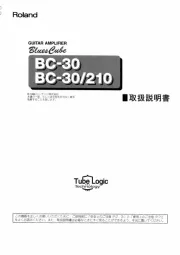
4 September 2025

14 Augustus 2025
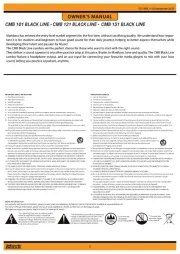
5 Augustus 2025
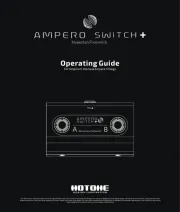
4 Augustus 2025
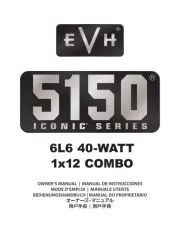
4 Augustus 2025
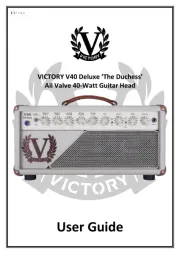
31 Juli 2025
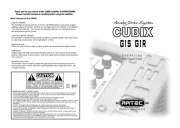
29 Juli 2025
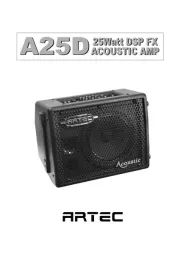
28 Juli 2025

18 Juli 2025
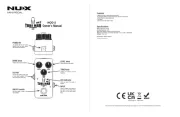
17 Juli 2025